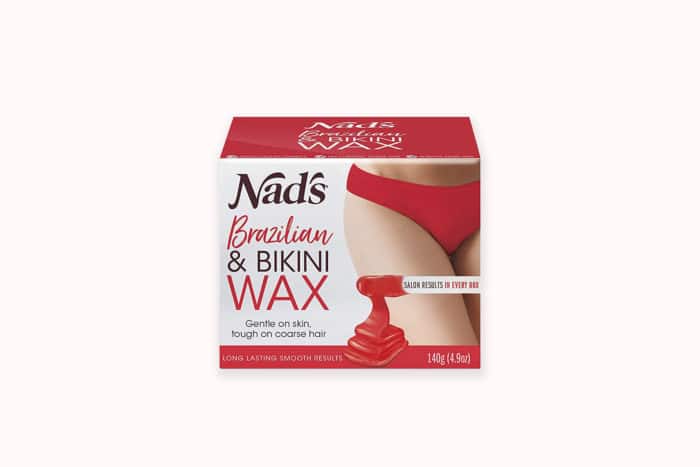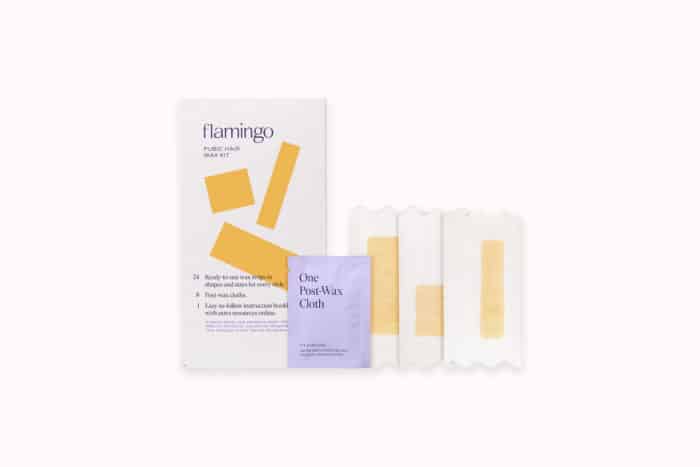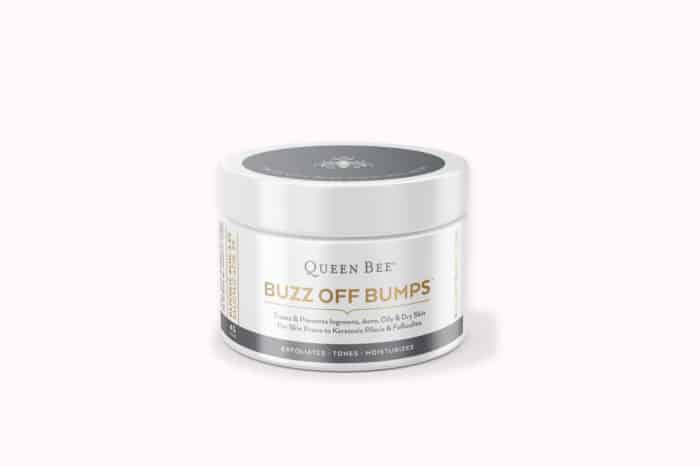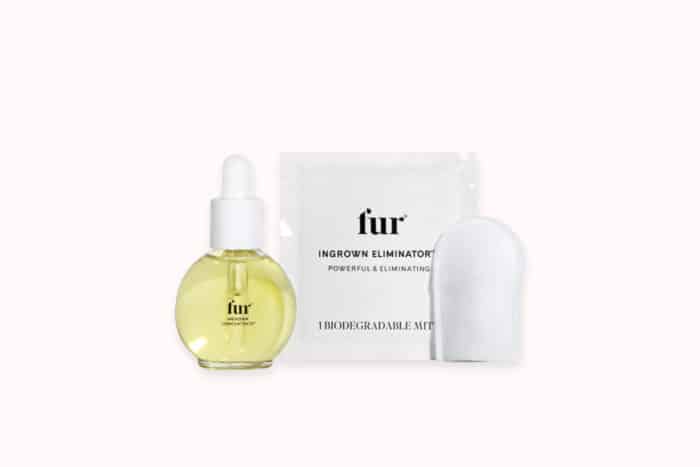None of us could have predicted just how big a year 2020 would be for DIY projects, but here we are now—a bunch of bread-baking, tie-dyeing, mask-sewing experts. Beauty tasks, like hair coloring and cutting, have proven a bit more difficult to master; perhaps the most intimidating of them all is the at-home Brazilian wax.
But desperate times call for desperate measures, and the upside of learning how to properly wax yourself is saving a lot of time and money in the long run. Because YouTube tutorials and DIYs on Brazilian waxing aren’t the most pleasant viewing experience, we asked estheticians Jodi Shays, the founder of Queen Bee Salon & Spa in Los Angeles and Seattle, and Natalie Ismiel, Nad’s brand expert and ambassador, to share their best tips and tricks for mastering a salon-worthy wax at home.
First, a note on pain
There’s no getting around it: giving yourself a full Brazilian wax or a bikini wax isn’t going to feel great. In fact, it’s probably going to hurt a lot more than it does at the salon, since you’re not able to see down there as easily, recognize hair growth patterns, and work at the speed of a professional waxer. Many salons also offer numbing cream, which can make the hair removal experience (whether you’re lasering or waxing) virtually painless, but Shays cautions against using an over-the-counter version. “There are side effects to some of these topicals that could cause a reaction,” she says, adding that they also make it hard to tell if your wax is too hot, which could lead to a burn.
What you can do to minimize skin sensitivity, according to Ismiel, is to avoid waxing right before or during your period and limit alcohol and coffee consumption in the days before. “Sometimes the pain can be caused by anxiety you may be feeling about waxing for the first time,” she says. “Relax your body, take deep breaths, and try not to tense up. Once you’ve done your first wax, you’ll find that every wax after that gets easier and less painful.”
Find the right at-home wax
There are a ton of different at-home waxing kits available on the market, and it really comes down to personal preference. Hard wax (the kind you heat up and spread with a spatula) has the benefit of being easier to control and allows you to work in small sections—but it can be messy, and beginners often apply it unevenly. There’s also a risk of burning the skin if it’s too hot. Wax strips are more straightforward, but they’re often too large for the hard-to-reach inner areas and folds and can be more painful to rip off swiftly.
If you can, buy a few different options and test small patches to determine which works best for you. One thing to avoid though, says Shays, is resin-based wax. “They tend to be the old-school honey waxes that stick to the skin.”

This hard wax removes even the most coarse hairs, and the beeswax in the formula makes it ideal for sensitive skin.

With 24 strips in three different sizes and shapes, you’re able to better customize your wax and easily get into the most tricky areas.
Prepare your skin to be waxed
Properly preparing your skin and hair to be waxed is just as important as the waxing itself. Shays says to discontinue the use of any retinol skin-care products at least two weeks before your DIY Brazilian wax, to avoid irritation—and if you’ve recently used a steroid cortisone cream in the bikini area, hold off on waxing altogether. “Cortisone creams can thin the skin and waxing can break the skin open,” she warns. On the day of, take a warm bath or shower and exfoliate with a gentle scrub, to remove any dead skin cells blocking the follicles. Dry off, skip the body lotion, and trim your hair down to about a quarter of an inch long using brow scissors. Then take an ibuprofen 20 minutes before, to minimize pain.
Related: The Best Ways to Remove Your Unwanted Facial Hair At Home
Get in position
A DIY Brazilian wax can double as a squatting and stretching workout at times—prepare to switch positions often throughout the process. You’ll want to have a handheld or easily moveable mirror handy as well as a sturdy chair. The most important thing to remember when waxing is that skin should always be stretched as taut as possible. “You never remove wax from skin that is loose,” says Shays. For the most hard-to-reach places, like the crack and perineum, place your mirror facing up on the floor and squat over it. “You can also lie in front of a standing mirror while bending your knees and spreading your legs widely and propping your lower back with a pillow,” says Ismiel. For the innermost thighs and labia area, put one foot on the edge of the bathtub or the seat of a chair and “use your nondominant hand to pull the skin taut and up toward you while you apply the wax with your dominant hand,” says Shays.
Self Brazilian wax best practices
- “Start from the outside and work your way inward to the more sensitive areas and downward to the anus,” recommends Ismiel.
- Always apply wax in the direction of the hair growth, and “leave a small amount of wax at the end of the patch curling up, to make it easier to remove,” says Ismiel.
- The smaller the strip, the better. “Think in thumbprint-size amounts of wax application—about an inch,” says Shays.
- The inner labia can be tricky to get wax to adhere to, so tap on a light dusting of cornstarch or baby powder, to soak up any moisture.
- Pull the wax strip off in a swift motion (the slower you go, the more painful it will be), keeping your hand as close to the skin as possible as you do. Generally, the rule with waxing is to always pull in the opposite direction of hair growth, but hair patterns in the pubic area tend to be more complicated. “Sometimes hair grows up, down, inward, and outward. This is something a skilled waxologist would recognize. I will say that the outer labia hair tends to grow inward on some people, so my advice would be to apply the wax upward and remove downward. It’s the same [for] inside the cheeks,” says Shays.
- Massage your skin immediately after each pull, to minimize redness and inflammation.
Post-wax aftercare
After you’ve finished waxing the entire area and have gotten all traces of wax off with a gentle oil (baby oil or coconut oil work well), use an alcohol wipe or solution to keep bacteria off the skin. To soothe and moisturize skin and take down inflammation, Shays recommends applying an oatmeal-based lotion or some aloe vera mixed with cortisone cream all over but notes that Aquaphor is best if you have a friction burn, which will look like a shiny patch of skin. Whatever you do, she stresses, do not use essential oils, including lavender and tea tree, on the area. “They can actually burn and irritate the skin.”
For at least 24 hours afterward, you’ll want to avoid lace or nylon underwear (light cotton is best), exfoliating, working out, and soaking in a tub or Jacuzzi, says Ismiel, since high heat and sweat can cause irritation.

The combination of exfoliating AHAs and BHAs plus calming aloe vera, colloidal oatmeal, cucumber, and other plant extracts in these pads help keep skin free of redness, clogged follicles, and ingrown hairs.

Use the finger mitt in the shower to buff away dead skin cells, then pat a few drops of the concentrate on dry skin, to treat ingrown hairs or prevent them from forming.











